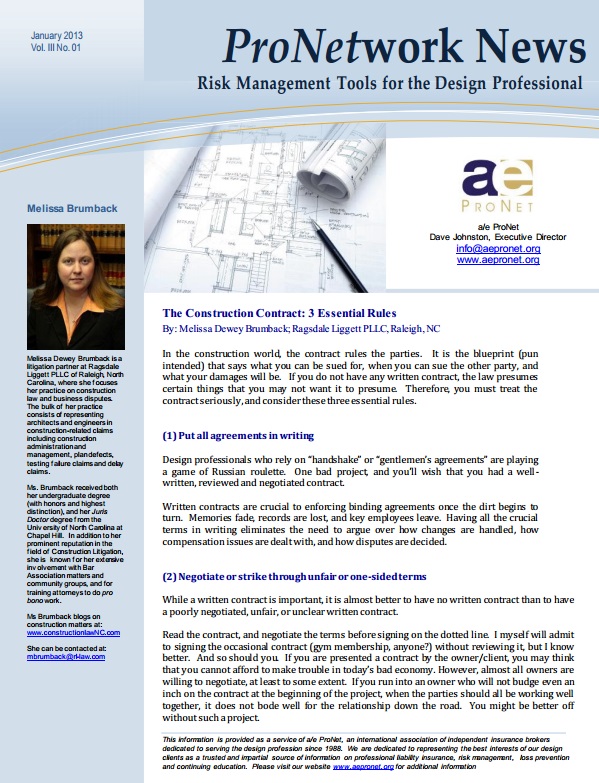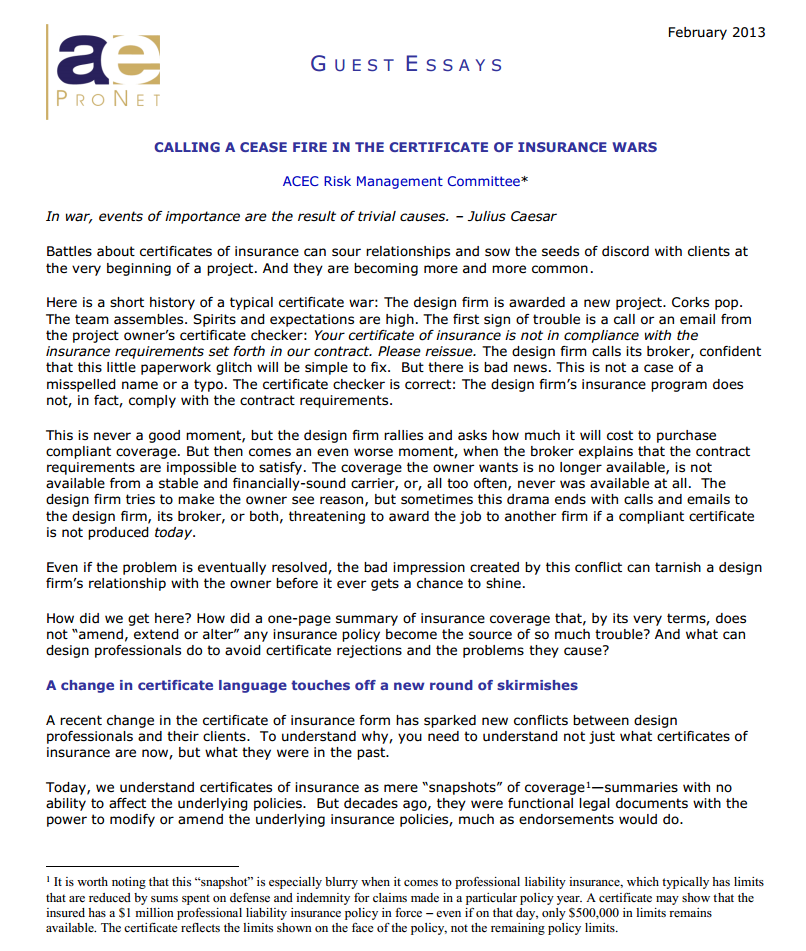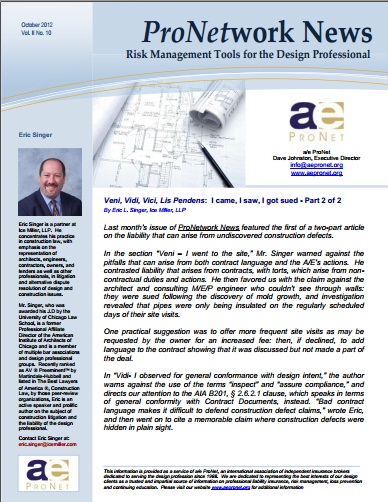
I shouldn’t need to buy insurance! I’ve never had a claim.
This is a common refrain from architects and engineers purchasing professional liability insurance for the first time. We hear you. There are lots of design professionals who feel this way. That’s why it’s important to recognize that insurance isn’t about punishing you for past claims; it’s about protecting you from future claims. Contractual insurance requirements aren’t merely expensive obstacles to bidding for a job; they’re supposed to protect the individual parties from the far more expensive burden of an uninsured professional liability claim. And, like it or not, industries like Architecture and Engineering are rife with potential claims.
Oh yeah? Like what?
Don’t just take our word for it. Check out this library of War Stories and Claims Scenarios from Architects, Engineers, Surveyors & Consultants, an excellent resource offered by Victor O. Schinnerer, one of the leading Professional Liability insurance companies. These are real life claims stories. Here you can read through scenarios which happened to other firms, often in spite of their best efforts to avoid such things! While the names have been changed, details are included. In each case, you’ll find out what the mistake was. How it was made. How much it ultimately cost. How it could have been avoided.
A couple of examples from the War Stories library:
ABC Engineers provided design services for a residential project. The owner obtained a construction loan from a bank for $2.7 million; believing he could obtain additional funds from the bank if needed. As construction progressed, they expended the $2.7 million budget before the project was complete. The bank believed $2.7 million was adequate to complete the project and denied the owner’s request for an additional $1.3 million. The owner could not obtain additional funds and the contractors stopped working, leaving the project incomplete. Read more at Schinnerer’s website…
Gerard Coins Architecture, a sole proprietor, was retained by a housing authority to provide architectural design for Blanket Apartments, a low income housing development. Gerard Coins Architecture also provided mechanical design, which was permitted by state law. The architect’s design called for standard, 30 gallon water heaters but the owner wanted electric, tankless water heaters instead. The architect checked with a supplier and based on verbal information, sized the water heaters for the apartment units.
After the apartments were built, it was discovered that the water heaters did not supply enough hot water. The architect contacted the water heater manufacturer who told him the water heaters were intended to be used at a source, such as a sink or bathtub—not to heat the water for an entire apartment. Read more at Schinnerer’s website…
Homer Watkins Engineering, a civil engineering firm, was retained to provide a limited inspection and design report for a historic building. Several years later, they provided an inspection report for the sale of the same building.
A painting contractor employee, who was working on the historic building, fell three stories sustaining serious injuries after the railing collapsed on a balcony he leaned against. The painting contractor employee filed suit claiming he was permanently, partially disabled and disfigured. After filing suit against a number of parties, Homer Watkins Engineering’s inspection report was found during discovery and the suit was amended to add them.
The painting contractor employee contended that while Homer Watkins Engineering’s inspection report put the new owner on notice that the railing was too low and posed a safety hazard, it did not go far enough in warning the owner that it should be fixed immediately. While it was felt the height of the railing had nothing to do with the fall, the defense counsel felt the inspection report should have been more detailed as it was dealing with a very old brick and wood building that may have had weaknesses requiring more investigation. Read more at Schinnerer’s website…
Protect yourself and your firm from situations like these by purchasing a Professional Liability policy tailored to the specific needs of design professionals. Our members are specialists in this field, so find and contact your local a/e ProNet broker today.







